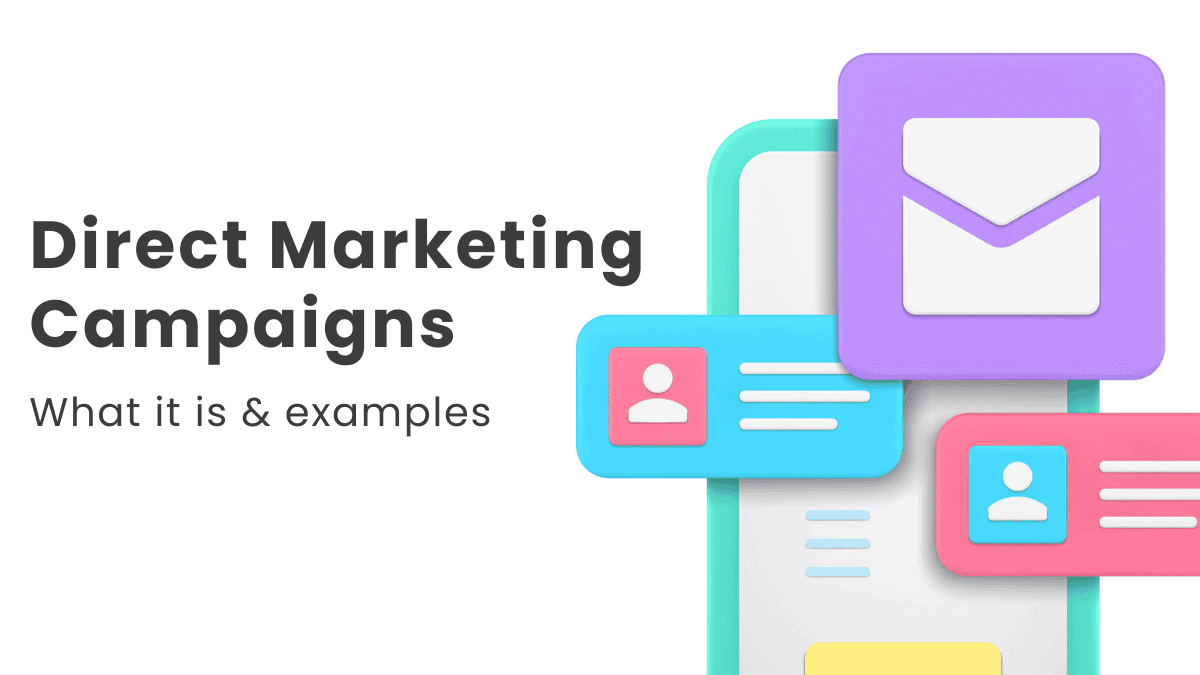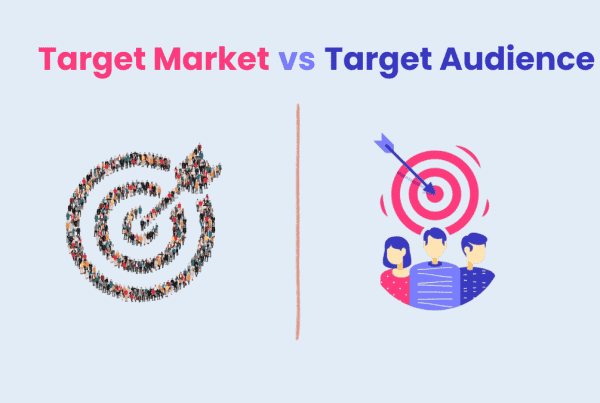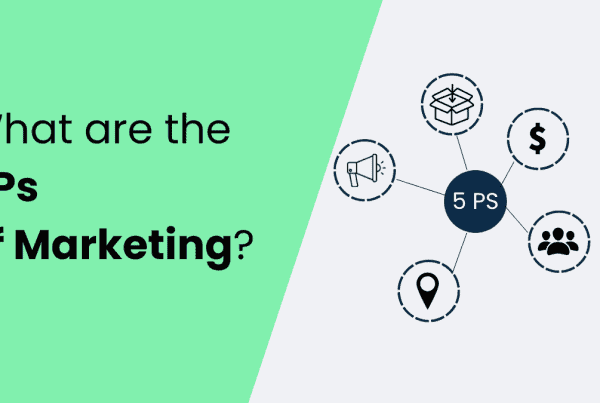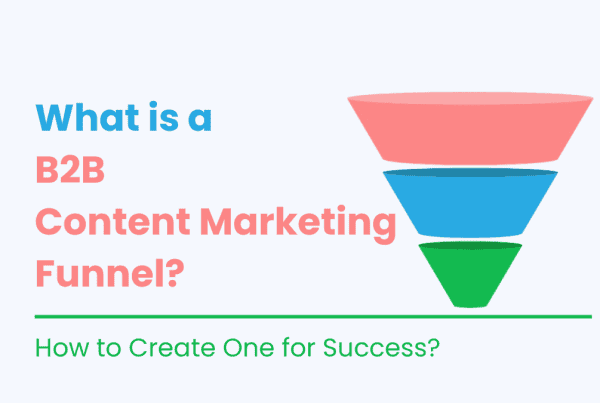
Although there is a flood of marketing ideas, some efforts are unique in that they touch the deep emotions of customers and deliver massive returns. Direct marketing has long been a proven strategy; it allows businesses to speak directly to audiences.
Of course, some direct marketing strategies have been far more daring and effective. However, there is undeniable evidence that such measures can lead to excellent business growth. Actually, 85% of marketers think direct marketing is the backbone of all successful marketing strategies. Curious to know how?
In this article, we guide you through five extraordinary campaigns that left a lasting impact, proving that the right strategy can really transform a brand’s journey.
What is direct marketing?
Direct marketing is like talking directly about something you are offering without involving any middleman. It is one of the oldest and most effective ways for businesses to promote their products or services. In fact, direct marketing strategies have been used 250% more since the 1990s.
Imagine this: you just started a small bakery, and instead of waiting for people to discover your cakes in a supermarket, you send out flyers to your neighbors, text them about your weekend offers, or even drop them a quick email about your freshly baked goodies. That’s direct marketing in action!
It’s all about reaching out to the customer directly – via email, text, mail or even a friendly phone call – and letting them know what you have.
![[your-subject] - EyeUniversal direct marketing campaigns](https://www.eyeuniversal.com/wp-content/uploads/2024/12/AD_4nXdv99qo9g8b5YhUgE6mwFBAQtFnUlGLryEwW1CXO25c1kiIl4AU4g4A7LTq8uoq30Ggoney93resxNFqBB1N3mqOIphB8vPeYvE1dBYqY9OSgRVyVqJqxHweOygRUcby_ruysrGhw.png)
A classic example? Think of those catalogs companies like Sears used to send out in the early 1900s. Families in far-off rural areas couldn’t visit stores often, so these catalogs brought the products right to their doorsteps, making shopping super convenient.
While we’ve moved on to emails and social media DMs instead of paper catalogs, the idea remains the same: connect with your audience personally, show them what you’re offering, and make it easy for them to respond or purchase directly from you. It’s straightforward, personal, and can work wonders when done right!
Pros and cons of direct marketing
Let’s see the ups and downs of direct marketing in a super simple way:
Pros of direct marketing
- Feels personal: Direct marketing makes customers feel special. For example, imagine getting a message from your favorite pizza place saying, “Hey Sam, grab a free drink with your next order!” It’s nice when a brand talks just to you, right?
- Saves money: Instead of spending big bucks on TV or internet ads, direct marketing focuses on people who care about your product. Like a small bakery sending offers to locals – they save money and attract the right crowd.
- Easy to track: You can quickly see if your efforts are working. Say you send out 100 discount codes via email, and 20 people use them. That’s 20 happy customers you can count on!
- Better results for your spend: Since you’re targeting people who already like or need your product, there’s a higher chance they’ll buy. For example, a gym sends workout plans to members – they’re more likely to join a new class than random people.
Cons of direct marketing
- Can be pricey to start: Setting it up can cost a bit at first. Like, designing flyers or setting up an email system might take some money before you see results.
- Reaches fewer people: It’s great for specific groups but not for spreading the word far and wide. A new brand might struggle to go viral with direct marketing alone.
- No outside opinions: People love seeing reviews or social proof, but direct marketing doesn’t always include that. For example, an email from a new shoe brand might not feel super convincing without customer feedback.
- Might annoy people: Too many messages can backfire. Like, if a brand sends you offers every single day, you might ignore them – or worse, unsubscribe.
So, direct marketing is like having a one-on-one chat with people who care about what you’re offering. It works great when done right, but if you’re pushy or off-target, it might not go as planned.
How does direct marketing work?
Think of it like sending a handwritten note to someone, instead of putting up a billboard and hoping they see it.
Here’s how it works: businesses use methods like email, SMS, social media messages, or even good old-fashioned mail to share their offers, updates, or personalized messages with customers.
For example, have you ever received an email that starts with your name and offers a discount on something you’ve searched for? The goal is to get a response from you, like clicking on a link, filling out a form, or even just replying to the message.
Let’s take a pizza place as an example. Instead of putting up an ad in the newspaper, they might send you a text with your name saying, “Hey [Your Name], craving pizza? Here’s a 20% discount just for you!” That personal touch not only grabs your attention but also encourages you to act right away.
In short, direct marketing is all about keeping things personal, relevant, and action-focused, making it easier for customers to connect and engage with what a brand is offering.
What are direct marketing campaigns?
Direct marketing campaigns are the actual activities or efforts businesses plan and execute to achieve their direct marketing goals. These campaigns are structured and targeted, focusing on specific audiences with tailored messages.
For instance, a holiday-themed campaign might include sending out festive postcards, running SMS discounts for gift shopping, and emailing a “last-minute sale” reminder – all as part of a single effort to boost holiday sales.
Different types of direct marketing campaigns
Direct marketing takes many forms, each designed to create a personal connection with customers and encourage immediate action. Below are some popular types of direct marketing campaigns, explained with simple examples:
Email marketing
This involves sending promotional emails directly to customers’ inboxes. For example, an online clothing store might send a “50% Off Today Only!” email, including product recommendations, exclusive offers, or details of an upcoming sale. By 2027, people are expected to get 20% fewer generic emails and 40% more personalized content.
SMS marketing
SMS campaigns use concise text messages to share discounts, updates, or reminders. For instance, a local coffee shop might send a text like, “Show this message for a free pastry with your coffee today!”
Direct mail marketing
The direct mail industry is expected to grow to $73.57 billion by 2026, with a yearly growth rate of 0.3%. This traditional method involves sending postcards, brochures, or catalogs to customers’ physical mailboxes. For example, a furniture store might mail out glossy catalogs showcasing their latest designs to inspire purchases.
Social media DMs
Brands leverage direct messaging features on platforms like Instagram, Facebook, or LinkedIn to connect one-on-one with their audience. For instance, a skincare brand might send you a DM with a discount code after you comment on one of their posts.
Telemarketing
This strategy involves calling potential customers to promote products or services. For example, an insurance company might call to discuss pre-approved health plans or exclusive benefits tailored to your needs.
Coupon marketing
Coupons, whether physical or digital, are sent directly to customers to encourage purchases. For instance, a grocery store might email “Buy One, Get One Free” offers or mail paper coupons for discounts on household essentials.
Face-to-Face selling
In-person interactions, like door-to-door sales or in-store demonstrations, offer the most personal approach to direct marketing. For example, a salesperson might visit your home to demonstrate a vacuum cleaner or showcase kitchen appliances at a mall.
Catalog marketing
Brands send detailed catalogs showcasing their products or services. A well-known example is IKEA’s catalogs, which include room inspirations and furniture collections, making it easy for customers to visualize and shop.
![[your-subject] - EyeUniversal catalog marketing](https://www.eyeuniversal.com/wp-content/uploads/2024/12/AD_4nXeLjuydcvYCCGfapa8cOLO9fWxtowREjUu2pxntPrid7JcpHNB9jfo58cLnFxxDbmHSEMKsYvQzTzCJhxXgALMp_D79uj6cL_dLeDl9LHiPKLe798njSOKxx8PgVV5GBpftkuhZ.jpg)
Direct response TV (DRTV)
These are TV ads designed to prompt immediate action, such as calling a toll-free number or visiting a website. For example, commercials promoting fitness equipment or kitchen gadgets often include “Order Now” offers with limited-time deals.
WhatsApp and voicemail marketing
Businesses use platforms like WhatsApp or pre-recorded voicemails to reach customers. For example, a restaurant might send a WhatsApp message about their weekend buffet deal or a voice message promoting their loyalty program.
Influencer outreach
Brands partner with influencers to send personalized messages or recommendations to their followers. For instance, an influencer might share a special promo code for their audience to use on a brand’s e-commerce website or app.
Event-based direct marketing
Brands connect with potential customers during live events, expos, or trade fairs. For example, an electronics brand might set up a stall at a tech conference, offering product demonstrations and promotional materials.
Personalized video marketing
Companies send custom-made videos to individual customers, often addressing them by name. For instance, an e-commerce platform might share a short video highlighting items left in the customer’s cart along with a discount offer.
Each type of direct marketing campaign caters to specific customer preferences and communication channels. The best approach depends on the brand’s target audience, the nature of the product or service, and the goals of the campaign.
5 best examples of direct marketing campaigns
Direct marketing can be super powerful when done right. Let me tell you about some awesome companies that nailed it with their campaigns. These examples will show you what they did, how they did it, and what they achieved. Ready? Let’s dive in!
Amazon – personalized email recommendations
Amazon sends emails to customers with personalized product recommendations based on their browsing and purchase history.
Amazon uses customer data to analyze what products a person might like. Then, they send emails with tailored suggestions, such as “You might like this!” or “Top picks for you.”
This strategy increased sales and kept customers coming back to shop. People loved the “personal shopper” vibe, which made them feel Amazon truly understood their needs.
![[your-subject] - EyeUniversal Amazon](https://www.eyeuniversal.com/wp-content/uploads/2024/12/AD_4nXfahGHY-9yZ_uM5-Q042JRGYJayQUpqWrv9deAk4KoazBtiQSV785O22ZMMuxTs2-QymDDSKM4yxgGj2DESmuxxRuNM1L64Acvb9osL_NicSH8WM6DF10DguzDbcKMKk3B8Lqh_EA.png)
Coca-cola – “share a coke” campaign
Coca-Cola printed people’s names on their soda bottles and encouraged them to share a Coke with friends or family.
They used personalized packaging (with names) and promoted it heavily on social media. Customers could even customize bottles online. Stores displayed the bottles in eye-catching ways, making it hard to ignore.
![[your-subject] - EyeUniversal Cocla Cola Campaign](https://www.eyeuniversal.com/wp-content/uploads/2024/11/Coca-Cola-Campaign-1024x576.png)
Sales skyrocketed! People rushed to buy bottles with their names or their friends’ names. It also created tons of user-generated content on social media as people shared pictures of their personalized Coke bottles.
Nike – NikePlus app push notifications
Nike used its app to send push notifications to users about new gear, fitness challenges, and personalized training plans.
The NikePlus app tracked user activity, such as running or gym sessions. Based on this data, Nike sent timely notifications like, “You’ve smashed your running goal! Celebrate with new running shoes.”
This direct and personalized outreach kept users engaged with the brand and boosted sales of Nike products. It also made customers feel supported in their fitness journey.
Airbnb – re-engagement emails for inactive users
Airbnb sent personalized emails to users who hadn’t booked a stay in a while, showing them travel recommendations based on past searches.
They crafted emails that said things like, “Miss traveling? Explore these destinations you’ll love!” with appealing images and links to book instantly.
![[your-subject] - EyeUniversal personalized emails](https://www.eyeuniversal.com/wp-content/uploads/2024/12/AD_4nXcuG9qUqQ19mqN_xV0wqYShfQt1a13SJ-0hWhmzPqZa6q77b4NPEJJhSDgtvg1OEyLkdHu82KR3izqU0L2TuDGj1REqup4iy1JpSJaMEh0A6whwPNgqqABQzNi_qJtY7HqoDpv3-Q.jpg)
Airbnb successfully brought back many inactive users, driving up bookings. The personalized touch made users excited about traveling again.
IKEA – direct mail catalogs
IKEA sends out beautiful, photo-filled catalogs directly to people’s mailboxes, showcasing their furniture and home décor ideas.
IKEA uses customer data to send catalogs to homes in areas where their stores are located. Each catalog is filled with inspiring room setups, making it easy to imagine how their products would look in your own home.
![[your-subject] - EyeUniversal IKEA – direct mail catalogs](https://www.eyeuniversal.com/wp-content/uploads/2024/12/AD_4nXeBVGlpJy8beHgY7atEqB-n2bPoRlDwuI2pfb5jJpJjWFDIriFwpsBiCnV0JYEnOViQhBkYnSTioB4fOz12_cJ36oEhU10WFr8kakNEySgIaAg87dxfwAVP1_OALTEG_Gv212BLfw.jpg)
The catalogs drive customers to IKEA stores and their websites. People love flipping through the pages, getting inspired, and planning their next home makeover.
Conclusion
All these companies used direct marketing to connect personally with their audience. Whether it was through an email, app notification, or even a printed catalog, they made customers feel seen, valued and understood. That’s the magic of direct marketing – it’s not just about selling; it’s about building relationships.
So, if you’re planning a direct marketing campaign, take notes from these big names! Personalization and creativity can go a long way.
Frequently asked questions
What is the difference between direct and indirect marketing?
Direct marketing connects with customers directly (e.g., emails, SMS, catalogs). Indirect Marketing builds awareness and trust through third-party channels (e.g., social media, SEO, influencers).
What is the aim of direct marketing?
The main goal is to directly reach customers, promote products or services, and encourage immediate actions like purchases, sign-ups, or inquiries.
What is the difference between direct and indirect channels?
Through direct channels businesses sell directly to customers without middlemen (e.g., websites, email). With indirect channels use intermediaries like retailers or affiliates to reach customers (e.g., stores, social media ads).
How is B2B direct marketing different from account-based marketing (ABM)
B2B Direct Marketing targets a broad audience within industries or segments (e.g., email campaigns). On the other hand, ABM focuses on specific high-valu



